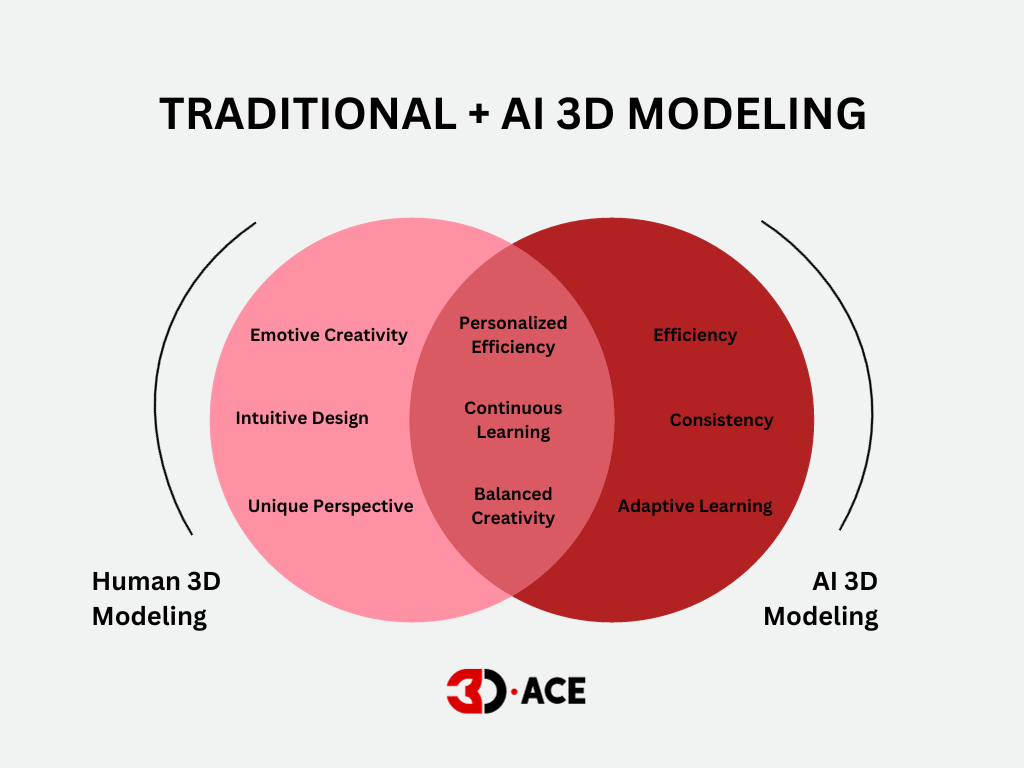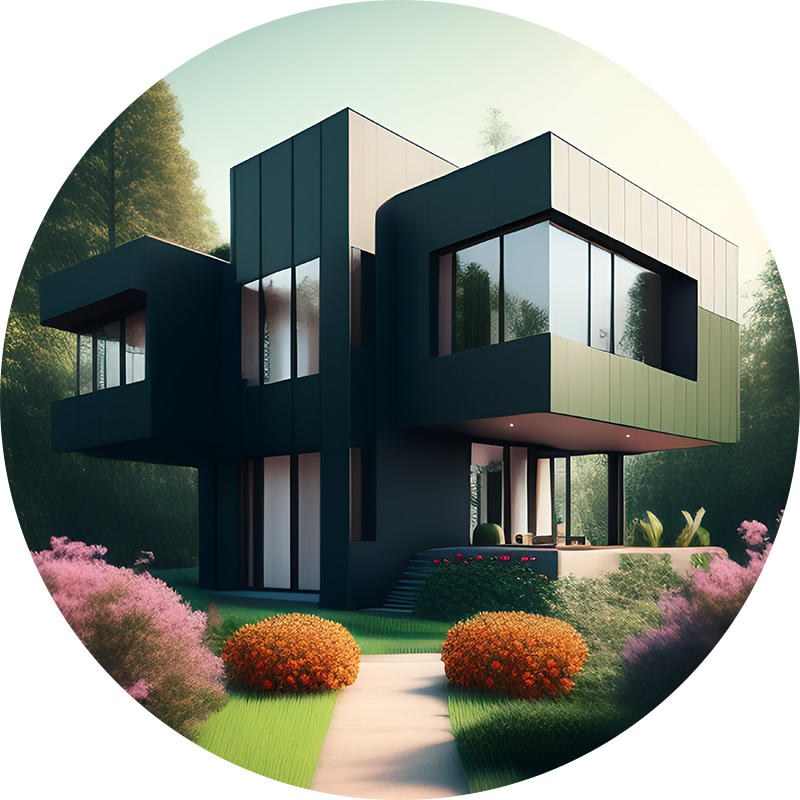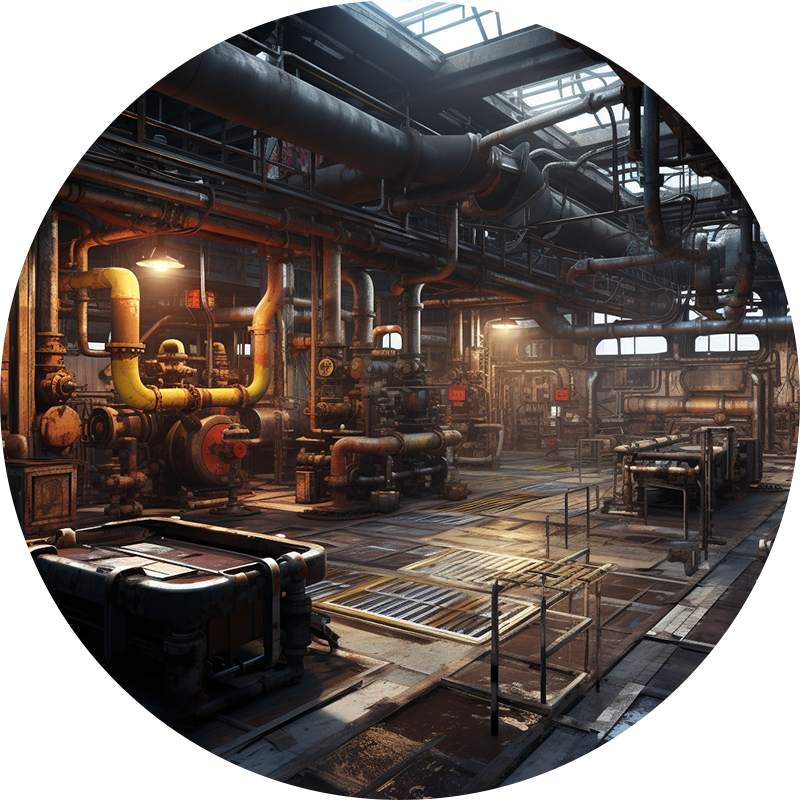2023 will go in history as a year marked by the mass adoption of artificial intelligence in business environments and our regular way of life. The AI revolution is here, and enterprises cannot afford to ignore it. Those who don’t believe in AI potential or can’t find time to explore its capabilities will be stuck in the past, losing customers and market shares to their innovation-embracing competitors.
Yet, we need to understand that AI technologies are not omnipotent. They can help greatly, but running the whole business solely on AI will be another mistake. The key to success is in finding the golden mean, where you can leverage the AI capabilities for the benefit of your business and mitigate its risks with the curation of appropriate sphere-specific workers.
As a company providing 3D modeling services, we cannot miss the emergence of AI 3D modeling tools. Our team has taken a deep dive into the subject, thoroughly exploring this growing landscape. In this article, we want to share our findings and answer the important question: where is AI placed on the map of 3D modeling for companies that need this process?
AI in 3D Modeling: Benefits and Potential
We would compare the rise of AI in 3D modeling to the moment when the first paintbrush met canvas – it’s transformative. For decision-makers in game development, advertising, video production, architecture, manufacturing, and product development, these new tools promise to trigger positive changes and level up their regular processes.
1. Speed and efficiency. Consider the Renaissance artists who spent years perfecting their masterpieces. In contrast, AI-driven 3D modeling can craft intricate designs in a fraction of the time. For game developers, this acceleration means the creation of more detailed and engaging worlds in less time. Architects and manufacturers can visualize prototypes faster than ever before.
2. Enhanced precision. Remember the game of ‘Telephone’ where a message gets distorted as it’s passed along? Human-driven 3D modeling can sometimes resemble this, with errors creeping in. AI, however, can maintain a level of detail and accuracy that’s consistently high. In industries like manufacturing, where a 0.1% error margin can translate to thousands in losses, AI’s precision can become pivotal.
3. Adaptive learning. Imagine if every time you baked, your oven learned just how you liked your cookies. AI in 3D modeling does precisely that. Of course, human specialists improve their skills over time as well, but artificial intelligence follows a more stable and traceable learning path. It learns from each project and refines its techniques, ensuring that each subsequent model is closer to perfection.
4. Cultural sensitivity in global markets. When venturing into the global markets, you must understand local cultural norms and work within their limits. AI, in this context, acts as the discerning artist, analyzing 3D designs with a deep awareness of local cultural sentiments. It guarantees that your products or advertisements fit and resonate deeply with local values, sidestepping potential cultural missteps.
5. Real-time feedback loops in virtual prototyping. Imagine a sculptor who could reshape a statue based on the immediate reactions of onlookers. Such capability would be precious in the business environment, and AI 3D makes it possible. Let’s contemplate an example from fashion: users virtually step into outfits, and AI changes the design based on user feedback, creating a product that will fully satisfy the client.
6. Ethical and inclusive design practices. Society increasingly recognizes the importance of inclusion, and the same is expected from businesses everywhere. AI, with appropriate guidance and proofing from specialists, can assist brands in creating just designs. AI tools are able to consider numerous aspects important for space and design availability, while humans miss something due to fatigue or other reasons.
AI Techniques for 3D Modeling
Do you know that over 60% of business owners believe AI will increase productivity? While the main implementation cases include customer services and cybersecurity, 3D modeling can easily become the point of improvement within your company.
For executives exploring the capabilities of AI for 3D modeling, understanding the artificial intelligence techniques and instruments is helpful for a deeper dive into the subject. So, here we are sharing the main techniques you should know.
Generative Adversarial Networks (GANs)
Imagine two artists in a room — one creates, and the other critiques until perfection is achieved. GANs operate on a similar principle, with two neural networks — the generator and the discriminator — working in tandem. This technique has been pivotal in creating high-resolution, realistic 3D models, especially in game development and video production.
Neural Network-Based Reconstruction
Like a seasoned sculptor who can visualize a statue within a block of marble, neural networks can reconstruct 3D objects from 2D images. This is invaluable for industries like architecture and product development, where a single photograph can be transformed into a detailed 3D model, streamlining the design process.
Deep Learning for Texture Mapping
Texture gives life to 3D models, making them appear realistic. Deep learning algorithms can analyze real-world materials and automatically generate texture maps for 3D models. For advertisers and game developers, this means the birth of characters and environments indistinguishable from real life.
Parametric Design Optimization
In the design world, every curve, angle, and edge matters. AI can analyze multiple design parameters simultaneously and suggest optimizations, ensuring the final model is aesthetically pleasing and functionally efficient. This is useful for industries like manufacturing and architecture, where design integrity directly impacts functionality.
Procedural Content Generation
Imagine creating vast digital worlds with unique terrains, structures, and ecosystems in a fraction of the time. AI-driven procedural content generation allows for the creation of expansive and diverse digital environments, especially pivotal for game developers looking to craft immersive experiences.
Predictive Analytics for Design Feedback
Before a product hits the market or a building is constructed, AI can predict how the design will be received, analyzing potential pain points and areas of improvement. This preemptive feedback loop ensures that designs resonate with the target audience, whether consumers in the market or stakeholders in a project.
AI 3D Modeling vs. Traditional 3D Modeling: The Detailed Comparison
The rise of AI raised a provocative question: Does the essence of creativity lie in the outcome or the journey? The 3D modeling specialists, as many others in the field of creative work, and business executives are facing this ethical dilemma, often taking opposite sides.
Traditional 3D artists pour their experiences, emotions, and cultural nuances into their creations. Every curve, shade, and texture they craft is a testament to their unique perspective. This human touch, with all its imperfections and brilliance, brings a soul to the art.
On the other hand, AI-driven 3D modeling is the epitome of efficiency and precision. It’s like a maestro who’s mastered every note to perfection. But while AI can replicate patterns, textures, and structures, can it truly replicate the soulful imperfections that frequently define art? Moreover, there’s the looming concern of job displacement. If machines can do the job faster and more accurately, where does that leave skilled artists?
While we are far from reaching a consensus as a society, we, as a 2D/3D content production studio, believe that AI is a tool, not a replacement. Just as the paintbrush didn’t replace the artist but enhanced their capabilities, AI can be seen as a modern brush — sophisticated, precise, and powerful. Instead of viewing AI as a threat, we should encourage 3D artists to harness its potential to merge the computational prowess of AI with the raw, emotive creativity of the human spirit.

The future might not be about choosing between AI and human touch but finding a harmonious blend. It’s not about replacing the human artist but empowering them with tools that amplify their innate creativity. The canvas is vast, and there’s room for the heart and the algorithm to co-create masterpieces.
The Main AI Tools for Creating 3D Models
Today’s 3D artists, equipped with cutting-edge AI tools, are experiencing a renaissance, crafting intricate designs with speed and precision that would leave the old masters in awe. For industry leaders in game development, advertising, video production, architecture, manufacturing, and product development, these tools are not just conveniences — they’re a breakthrough. Here’s a deep dive into five of the most popular AI-driven 3D modeling solutions that are redefining the boundaries of design.
NVIDIA Omniverse

A platform often likened to Google Docs for 3D design, NVIDIA Omniverse allows multiple users to collaborate in real-time on complex 3D simulations. Harnessing the power of NVIDIA’s RTX GPUs, it offers AI-enhanced tools that streamline tasks like environment lighting and material optimization.
DALL·E by OpenAI

While primarily known for generating 2D images, DALL·E’s underlying GPT-3 architecture has shown potential in creating detailed 3D models based on textual descriptions. It’s like having a digital sculptor who crafts models based on verbal cues, making it a promising tool for rapid prototyping.
Autodesk’s Generative Design

A game-changer for architects and product designers, Autodesk’s Generative Design uses AI to explore all possible permutations of a design, quickly generating design alternatives. It’s akin to having a team of architects working simultaneously, each presenting a unique design solution.
RunwayML

Bridging the gap between AI and creative professionals, RunwayML offers tools that allow artists to integrate machine learning into their 3D modeling workflows. From texture generation to real-time object recognition in 3D spaces, it’s a versatile tool that amplifies the capabilities of 3D artists.
Meshroom by AliceVision

An open-source 3D reconstruction software, Meshroom harnesses the power of photogrammetry and AI to convert a series of 2D images into detailed 3D models. It’s like piecing together a jigsaw puzzle, where the AI meticulously arranges each piece to craft a coherent 3D image.
How Can AI-Powered 3D Modeling Transform Industries?
We dedicated much time to explaining the overall value of AI-powered 3D modeling. Now, let’s contemplate the specific outcomes the main industries leveraging 3D modeling can expect.
Game Development

Remember the breathtaking landscapes and intricate character designs of The Witcher 3: Wild Hunt? CD Projekt spent years crafting this expansive world. With AI-driven 3D modeling, such detailed environments and characters could be developed in a fraction of the time, allowing studios to release more immersive games at a faster pace and potentially revolutionizing the gaming industry’s production timelines.
Advertising

Through the last 20 years, digital has transformed advertising radically. Now, it is on the verge of another shift, as artificial intelligence promises 3D ads tailoring in real-time to user behavior and preferences. AI can analyze viewer reactions and adjust 3D elements on the fly, ensuring that ads not only capture attention but also resonate deeply, leading to higher engagement and conversion rates.
Video Production

Films like Avatar broke ground with their 3D visual effects but at the cost of massive budgets and long production timelines. AI can streamline the creation of such high-quality 3D visuals, making it feasible for even smaller studios to produce blockbuster-level effects. This democratization can lead to innovative storytelling boosts, expanding filmmakers’ capacities to bring fantasy worlds onto the screens.
Architecture

Imagine designing a skyscraper and having AI instantly provide optimized structural designs, energy efficiency suggestions, and even interior design layouts based on historical data and current trends. Architects can focus on the broader strategic vision and creative potential while AI handles the intricate details, ensuring structures that are both aesthetically pleasing and functionally superior.
Manufacturing

Prototyping, a traditionally time-consuming but necessary process, can be significantly accelerated with the help of artificial intelligence tools. Instead of multiple physical iterations, AI can thoroughly simulate and test various 3D models under real-world conditions, ensuring the final product is innovative, functional, and reliable, consequently leading to optimized costs and reduced time-to-market.
Product Development

Consider the potential design evolution of products like smartphones or laptops. AI can analyze user feedback on current designs, predict upcoming trends, and assist in crafting the next big innovation. Product developers can stay ahead of the curve, double-checking their theories through AI applications or leveraging artificial intelligence for research and advanced analysis.
Healthcare

Healthcare VR solutions, powered by 3D modeling, have become a great assistance to medical professionals. Digital twins of organs or even the whole body, virtual learning environments, and metaverse hospitals are the game-changers. In turn, AI 3D modeling can reduce the costs required to implement these solutions, allowing more medical institutions to adopt them and provide better care.
Fashion

The fashion world, always on the cusp of innovation, rapidly adopts 3D modeling, introducing virtual fashion shows and clothing items. AI provides great customization capabilities here: envision a digital runway where AI crafts 3D virtual try-on, allowing customers to witness haute couture on avatars mirroring their physique. It’s not just about aesthetics; it’s about enhancing the online shopping journey and sculpting the future of retail.
Dive into the World of Efficient 3D Modeling with 3D-Ace
3D modeling is a process that requires relevant tech expertise, knowledge of tools, and a creative mindset. With years of experience as an art outsourcing studio, we have learned 3D modeling inside and out. AI adoption is just the next step in the development of the 3D modeling niche, while the basis remains the same. If you need assistance with 3D modeling or a strong team to do it for your company, we are here! Feel free to contact us and share the details of your requests.









